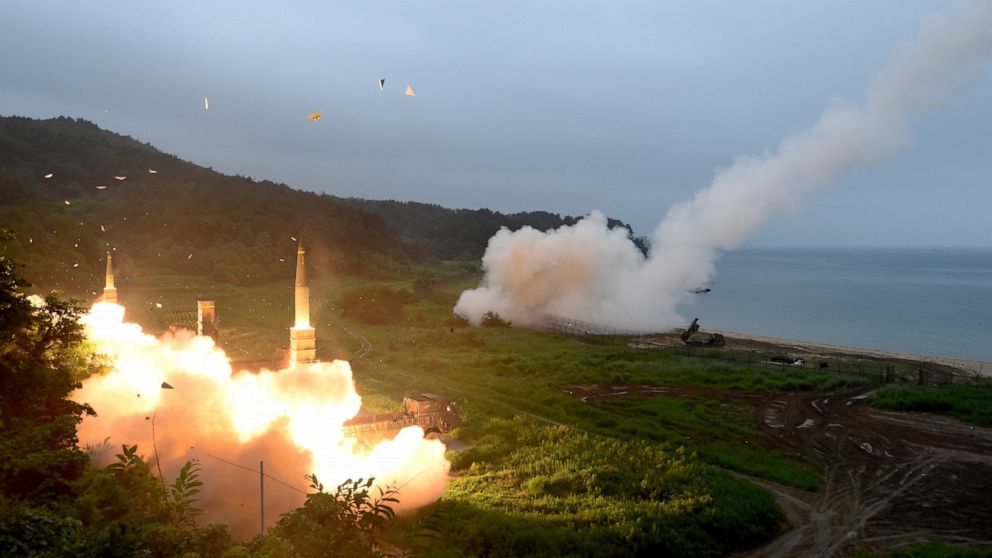
South Korea said on Tuesday it obtained the consent of the United States to use solid fuel for space launch vehicles, a move that experts say would allow Seoul to launch its first surveillance satellites and hoard technology to build more powerful missiles.
SEOUL, South Korea – South Korea said on Tuesday it obtained the consent of the United States to use solid fuel for space launch vehicles, a move expected to allow Seoul to launch its first surveillance satellites and acquire technology to build more missiles. powerful.
Solid fuel offers greater mobility for missiles and rockets, and reduces launch preparation time. But Washington had imposed strict restrictions on Seoul’s use of solid propellers for launching space rockets for fear that it could be used to produce larger missiles and spark a regional arms race.
On Tuesday, the South Korean government said Seoul and Washington agreed to review related bilateral missile guidelines to lift such restrictions.
Kim Hyun-chong, deputy presidential national security adviser, told reporters that all South Korean research institutes, companies and individuals are now free to develop, produce and own space launch rockets that use solid fuel.
Kim said the revised agreement still prohibits South Korea from having a missile with a range of more than 800 kilometers (500 miles). But he said Seoul can discuss altering that restriction with Washington if necessary for South Korea’s national security. A missile fired from South Korea with a maximum range of 800 kilometers is still enough to attack all of North Korea.
Kim said South Korea’s intelligence and reconnaissance capability would significantly improve when it produces and launches solid-fuel rockets to put low-Earth orbit spy satellites into space. He said it makes more sense to use solid fuel rockets for such satellite launches because the price of the solid propellant is only one-tenth the price of the liquid propellant.
“Theoretically, we can launch a satellite into low Earth orbit through liquid-fuel rockets, but it’s like delivering a ‘jjajangmyeon’ plate in a 10-ton truck,” he said, referring to a popular delivery meal in South Korea. .
Kim said South Korea does not have military spy satellites, while regional powers have dozens of them. He said the use of solid fuel rockets would help South Korea obtain an “unblinking eye” that monitors the Korean peninsula throughout the day.
Lee Choon Geun, a missile expert at the South Korean Institute for Science and Technology Policy, said South Korea could operate two or three low-Earth-orbit surveillance satellites to better monitor North Korea. He said that solid thrusters are easier to handle and require much less rocket launch time, although they have weaker thrust forces than high-quality liquid thrusters.
Lee said the latest deals with the United States would also allow South Korea to expand its space development infrastructure and accumulate knowledge to make missiles that can fly longer with larger warheads. Experts say ballistic missiles and rockets in satellite launches share bodies, engines, and other similar technologies.
Jung Changwook, head of the Korea Private Defense Study Forum, agreed that the technology to produce solid fuel rockets can also be used to build longer-range missiles. He said the United States likely agreed to the review of the agreements to strengthen its alliance with South Korea to better deal with China.
South Korea’s missile capacity is less than that of its rival North Korea. In 2017, North Korea conducted three ICBM tests as part of its efforts to build a nuclear-tipped missile capable of reaching the continental United States. In 2013, South Korea managed to propel a satellite observation station in orbit aboard a rocket first launched from its ground, but parts of that rocket were built with the help of Russia.
.